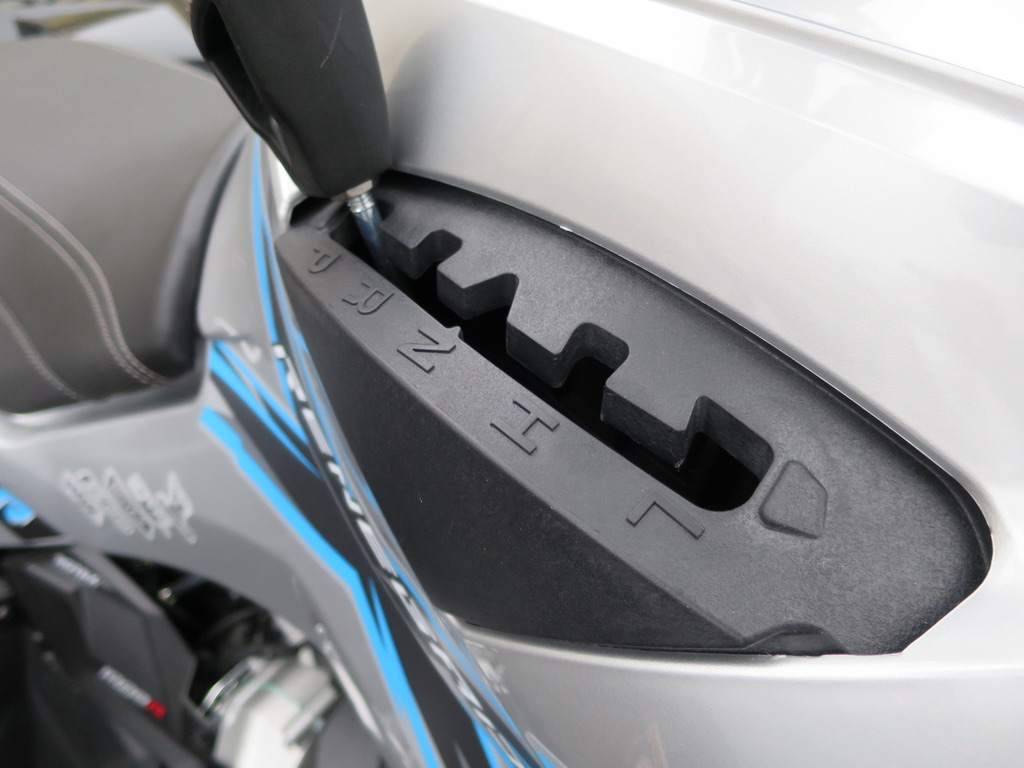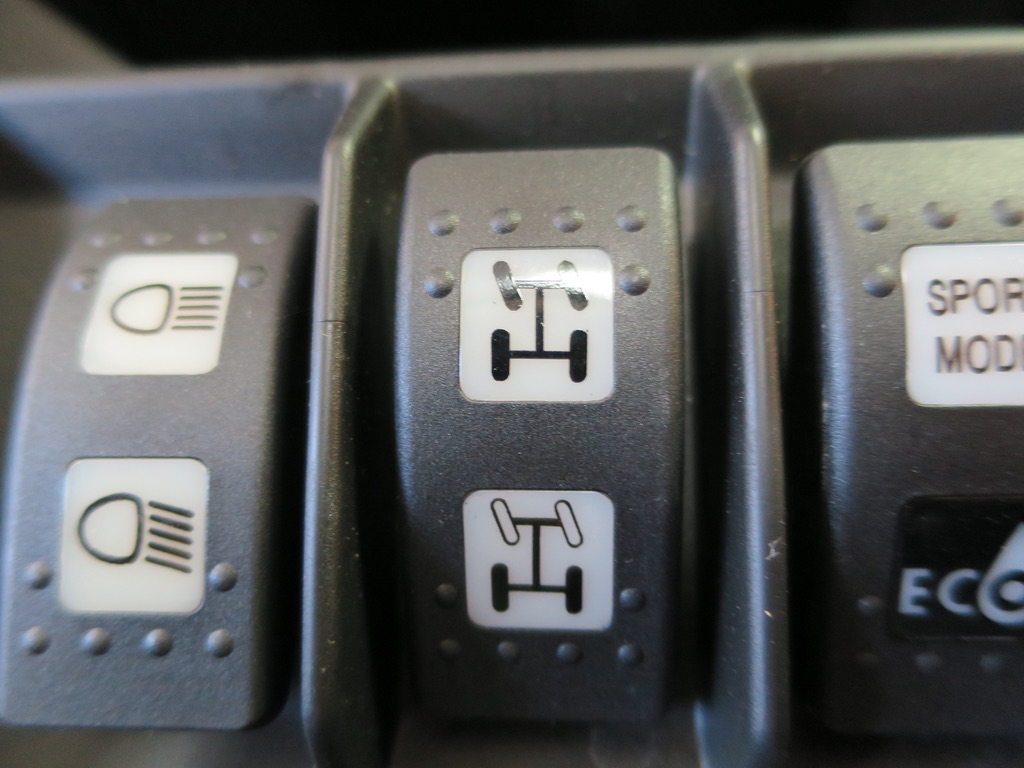There are 3 different types of ATV and UTV transmissions.
- Automatic (CVT)
- Semi-Automatic
- Manual (Clutch and gear shifting)
It’s more common to have an automatic (CVT) transmission on most ATVs/UTVs except for racing quads which use manual transmissions.
It’s super rare to find a 4 wheel drive ATV with a manual transmission, a semi-automatic is more common, but an automatic CVT is most likely especially if it’s newer.
Automatic Transmission
An automatic transmission is going to be different than your car or truck transmission.
An ATV uses a CVT (Continuously Variable Transmission) which means it doesn’t “shift” gears. A CVT is always in the right gear and gives ATVs a smooth ride. CVTs are so smooth that many car manufacturers are now adding their own versions.
How An Automatic Transmission Works
A CVT uses weights on one of the “pullies” and a belt between them, and the faster the engine goes, the more the weights spread out and adjust the ratio. So as you go faster, the more the engine spins the weights, the more it expands to give the transmission the correct ratio to help you go faster.
A CVT has infinite gears and expands and contracts depending on the speed of the engine.
This is ideal for ATVs as it’s a simpler design and easy to fix if something goes wrong. So easy that many manufacturers make accessing the belt area simple and often give you a spot to store an extra belt.
How To Drive An Automatic
Manual Transmission
The manual transmission of an ATV is super similar to the manual transmission of a motorcycle.
The ATV clutch is located on the left side of the handlebars, just like a motorcycle. The right side of your foot is the gear selector that you push up and down, just like a motorcycle.
If you know how to drive a motorcycle, you know how to drive a manual transmission ATV, ignoring the leaning part.
How to Drive a Manual Transmission
Semi-Automatic Transmission ATV
CVTs have pretty much become the norm on most ATVs, especially on the utility models. You just put it in gear and go, but there are a few that have a semi-automatic transmission.
A semi-automatic lacks a clutch lever, but still requires you to shift the gears. However, when you change gears, the vehicle will handle the clutch for you, thus making it easier to drive than a manual.
The gear selector is either located near your right foot like a manual transmission or as a push-button selector on the handlebars.
I find push-button gear selectors to be the most user-friendly because you simply press up or down as needed. For instance, you’ll know it’s time to shift gears when the engine whines, indicating you’ve reached the maximum capacity of the current gear. At that point, ease off the throttle and press the up button to shift to a higher gear. Similarly, when slowing down, press the down button to shift to a lower gear.
Perks Of Semi-Automatic
It would seem crazy to get anything but an automatic transmission, but the biggest perk of a semi-automatic is that these ATVs are more of a workhorse compared to the automatics and less annoying than the manuals.
Semi-automatics will have a transmission more like a tractor, as these things are the real workhorse.
The automatic transmissions use belts, but belts get worn out easily if you do a lot of pulling or get stuck often.
Belt tech has gotten a lot better, but these semi-automatic ATVs are a different beast. The bad part is that it’s getting harder to find them as manufacturers move to CVT these days.
Also, a semi-automatic is super rare for UTVs or side-by-side; it’s mostly CVT or manual transmission.
Manual vs. Automatic ATV Transmission
When you buy an ATV, you don’t get to pick what transmission you want, like you would with a car. If you’re buying a utility ATV, you get a CVT, and if you buy a racing quad, you get a manual transmission.
Racing quads still use manual transmission because the racers want that as it gives the most control over the machine.
You don’t see manual transmission on utility ATVs anymore because it’s a pain worrying about gears as you climb rocks, hills, go through the mud, or other non-racing style terrains.
Racing quads go on racing tracks, sand, or wide-open land, making a manual more fun and needed.
So it’s not a manual vs. automatic debate but a racing vs. everything else kind of debate. If you want a racing-style quad, your only option is a manual transmission, and if you want utility, your only option is an automatic.
Wet Clutch Transmission
There is a 4th kind of transmission called a wet clutch, but I don’t often consider it as it’s primarily used in kids ATVs.
The wet clutch transmission is one speed and only engages when the engine goes over a certain RPM.
When it comes to kid’s ATVs, you adjust the top speed with a screw located at the throttle. This screw sets how far the throttle can be pressed. So the transmission has very little to do with its top speed.
A few adult-sized models will use a wet clutch transmission, but they’re found on the cheaper ATVs. They are also 2-wheel drive only and chain-driven too. If you want my opinion, don’t start on this kind of model if you’re a beginner. Stick to a CVT 450cc to 500cc utility ATV, as it’s more forgiving and easier to understand.
High Gear vs. Low Gear
On an ATV that uses a CVT, you still have options for high or low gear.
The high (“H”) gear is the one you use to go to full speed or your general gear. Think of the high gear as the Drive (“D”) gear you have in your car.
The low gear is what you use if you need a lot of torque, like when pulling a trailer or getting out of a rut.
Another reason to use low gear is if you have larger than normal tires on your ATV. For example, if you have mud tires, you should keep your ATV in low gear as much as you can to avoid burning out your belt.
Low gear is also handy for getting out of tight spots where you’re stuck or climbing. It’s also nice for when you go down a steep hill to slow you down.
Belts Breaking
Belts on ATVs only break if you do something to overload the belt or if there is a manufacturer defect in the belt.
Also, belts break if you don’t do the proper break-in procedure.
ATV manufacturers go with the belt design because it’s easier to fix, especially if you’re out on the trail. In addition, you can swap out a belt far more easily with a few tools than fixing a broken clutch that is sealed and tucked away.
One trend I do see is people using wheels far too big for their ATV and not riding in low gear. You’re going to pop a ton of belts if you have massive mud tires and always ride in high. A lot of other mods will mess up your belt too.
The people I’ve seen have the least problems out of belts, keep their ATV close to stock, or use better aftermarket belts and are sticklers for break-in.
Best On Gas
You get better gas mileage on a manual transmission ATV if you do it right.
But the few miles you may gain is not worth the extra work when modern CVTs are easier and overall better.
The difference used to be more significant when CVTs started rolling out, but manufacturers have gotten so much better at gas mileage with modern ATVs that it’s not worth getting a manual over a CVT.
The CVT won the battle of ATV transmissions, and they’re only getting better.
Will Engaging 4×4 Drive While Moving Mess Up Your Transmission?
Do not engage your 4 wheel drive while moving. You need to come to a complete stop before you turn on your 4X4.
You can mess up your transmission if you engage 4 wheel drive if you’re not entirely stopped. Today, many models won’t even start to engage unless you’re fully stopped or even have the brake engaged.

